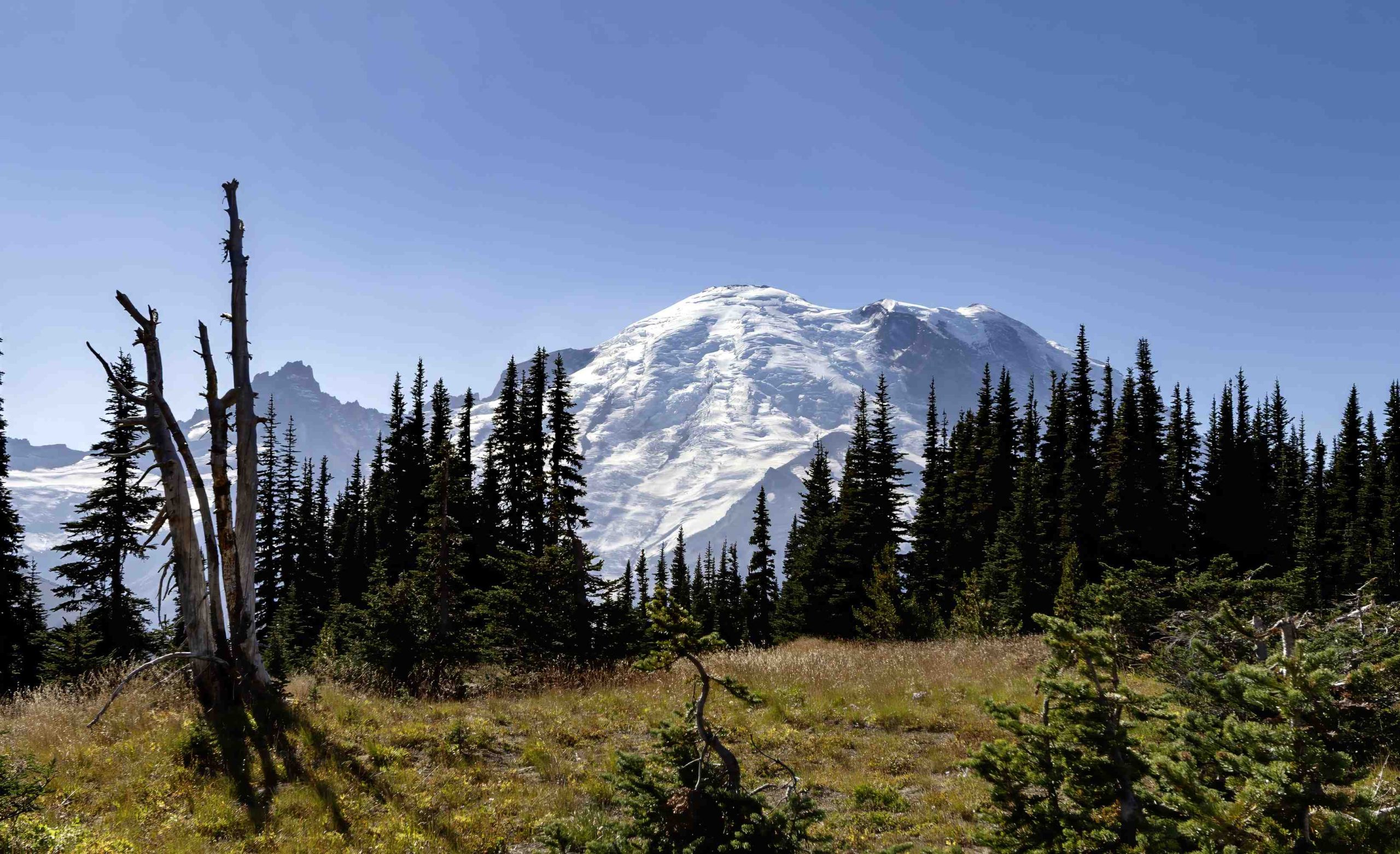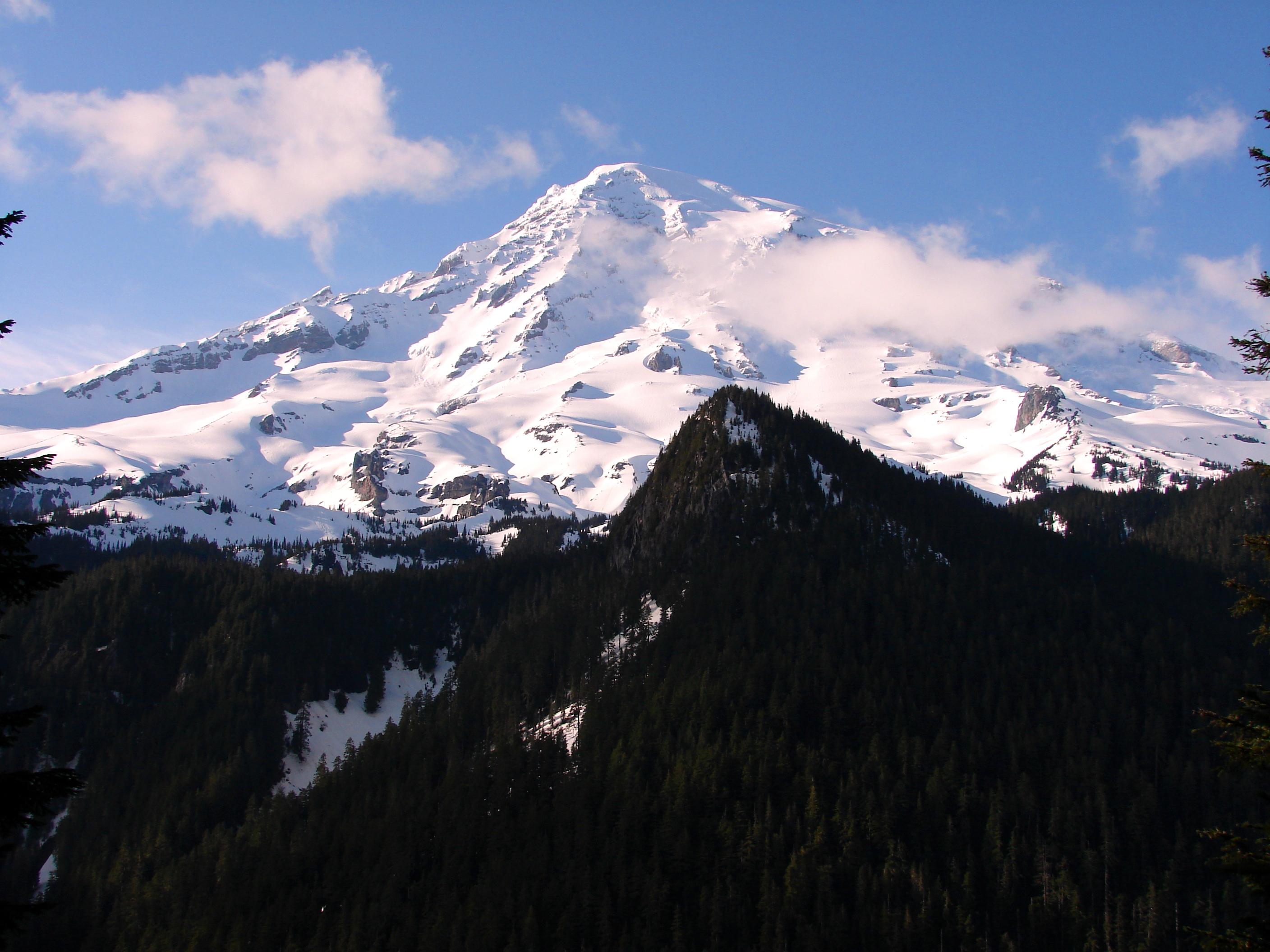Mount Rainier cave systems are unique glaciovolcanic formations at the summit of Mount Rainier, Washington. These caves, formed by the interaction of volcanic activity and glaciers, are the largest and highest ice caves in the USA. Located at an elevation of 4,382 meters, they offer a rare glimpse into the complex interplay between volcanic processes and glacial ice. The caves feature both conserved and transient passages, with recent surveys revealing new subglacial lakes and extensive networks.
What Are the Geological Features of Mount Rainier Caves?

The Mount Rainier caves are a testament to the unique geological processes that shape our planet. These glaciovolcanic caves are formed through a combination of factors:
- Volcanic gases
- Atmospheric advection
- Glacier-rock interface interactions
The cave system consists of two main types of passages:
- Conserved passages:
- Sub-horizontal
- Follow curvilinear crater contours
- Show low temperature variability
-
Influenced by perennial fumarolic activity
-
Transient passages:
- Smaller and dendritic
- Subject to seasonal changes
- Prone to mechanical collapse
Recent surveys have significantly expanded our understanding of these caves. The documented length of the East Crater cave has nearly doubled since 1973, now spanning an impressive 3,593 meters of passage and reaching depths of 144 meters.
How Do Mount Rainier Caves Compare to Other Cave Systems?

Mount Rainier caves stand apart from typical cave systems in several ways:
| Feature | Mount Rainier Caves | Typical Limestone Caves |
|---|---|---|
| Formation | Glaciovolcanic processes | Dissolution of limestone |
| Location | High elevation (4,382m) | Various elevations |
| Temperature | Near or below freezing | Varies, often stable |
| Composition | Ice and volcanic rock | Limestone |
| Stability | Some passages transient | Generally stable |
This unique combination of features makes Mount Rainier caves a subject of intense scientific interest and exploration.
Are There Public Tours of Mount Rainier Caves?
Unfortunately, there are no standard public tours available for the glaciovolcanic caves at the summit of Mount Rainier. These caves are primarily accessed for scientific research purposes due to several factors:
- Remote location
- Hazardous conditions
- Technical climbing requirements
- Environmental sensitivity
The extreme nature of these caves makes them unsuitable for general public access. However, this doesn’t mean that cave enthusiasts are left without options in the region.
What Cave Options Are Available Near Mount Rainier?
While the summit caves of Mount Rainier are off-limits, there are other cave systems in the vicinity that offer exploration opportunities:
- Ape Cave at Mount St. Helens:
- Located near Mount St. Helens, not Mount Rainier
- Accessible via a 1.5-mile trail
- Open year-round (weather permitting)
-
Requires moderate hiking and some crawling
-
Paradise Ice Caves:
- Located on the Paradise Glacier of Mount Rainier
- Accessibility varies with seasonal conditions
- Guided tours may be available through authorized providers
It’s important to note that these alternatives, while more accessible, still require proper preparation and adherence to safety guidelines.
What Equipment Is Necessary for Mount Rainier Cave Exploration?
For the rare instances of authorized scientific exploration of Mount Rainier’s summit caves, the equipment requirements are extensive:
- Advanced mountaineering gear
- Ice climbing equipment
- Protective clothing for extreme cold
- Specialized caving equipment
- Gas detection and monitoring devices
- Emergency communication tools
This list underscores the challenging and hazardous nature of these caves, reinforcing why they are not open for public exploration.
What Are the Safety Protocols for Cave Exploration on Mount Rainier?
Safety is paramount in any cave exploration, but especially so in the extreme environment of Mount Rainier’s summit caves. Key safety protocols include:
- Continuous monitoring of weather and ice conditions
- Use of appropriate protective gear and equipment
- Ensuring team members have necessary skills and experience
- Awareness and mitigation of risks such as:
- Avalanches
- Crevasses
- Toxic gases
- Extreme cold
These protocols highlight the specialized nature of exploring Mount Rainier’s caves and why such expeditions are limited to scientific research teams and highly experienced mountaineers and cavers.
What Is the Temperature Inside Mount Rainier Caves?
The temperature within Mount Rainier’s caves is a crucial factor in their formation and exploration. While specific temperature data is not widely available due to the limited access, we can make some informed observations:
- Temperatures are generally very cold, reflecting the glacial environment
- Likely near or below freezing year-round
- May be influenced by volcanic activity in some areas
- Can vary between conserved and transient passages
The extreme cold adds another layer of challenge to the exploration of these unique cave systems.
How Has Our Understanding of Mount Rainier Caves Evolved?
Our knowledge of Mount Rainier’s cave systems has grown significantly over the years:
- 1970s: Initial documentation of the East Crater cave system
- Recent surveys:
- Nearly doubled the documented length of passages
- Revealed new subglacial lakes
- Mapped passages that nearly circumnavigate the East Crater
This evolution in understanding highlights the dynamic nature of these caves and the ongoing scientific interest they generate.
What Makes Mount Rainier Caves Scientifically Significant?
The scientific significance of Mount Rainier’s caves lies in their unique characteristics:
- Intersection of glacial and volcanic processes
- High-elevation environment
- Presence of both stable and transient cave structures
- Potential insights into climate change impacts
- Possible microbial ecosystems adapted to extreme conditions
These factors make the caves a valuable natural laboratory for studying various geological, climatological, and biological phenomena.
In conclusion, while Mount Rainier’s summit caves remain inaccessible to the general public, they continue to captivate scientists and researchers. Their unique formation, extreme conditions, and ongoing changes offer valuable insights into the complex interactions between volcanic activity and glacial ice. As our understanding of these remarkable cave systems grows, so does our appreciation for the dynamic and ever-changing nature of Mount Rainier’s geological landscape.
References:
1. https://pubs.usgs.gov/publication/pp444
2. https://caves.org/journal-of-cave-and-karst-studies/jcks-articles/morphodynamics-of-glaciolvolcanic-caves-mount-rainier-washington-usa/
3. https://www.nps.gov/mora/learn/nature/geologicformations.htm

